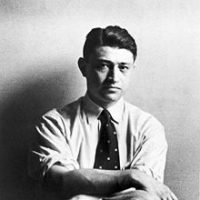

A native of Boston, Mydans was born in 1907 into a family of second-generation Russian immigrants. He studied journalism at Boston University, where he first learned how to take and develop photographs. After he graduated in 1930, he found work as a reporter for American Banker, but eventually bought a 35-millimeter Contax camera, which was a competitor to the more-famous Leica brand. The Contax was small, and enabled its carrier to easily roam about and take photos with a minimum of advance preparation. He quickly mastered the camera, and began to sell his work to Time and other magazines.
In 1935, Mydans was hired as a photographer with a U.S. federal agency called the Resettlement Administration; it later became the Farm Security Administration. He traveled throughout New England and the South, documenting the end of a rural-based economy, and gained a measure of renown for his images of bedraggled Arkansas farmers and their families. It was the Great Depression, and the poorest of America’s poor were devastated by the economic downturn. “One picture, of a Tennessee family living in a hut built on an abandoned truck chassis, portrays the misery of the times,” noted Mydans’ Times of London obituary, “as starkly as any photographs by his more celebrated contemporaries.”
After a more than a year with the Farm Security Administration, Mydans was hired by Life magazine just before its debut issue hit newsstands in late 1936. He was only the fifth photographer on its staff, joining an impressive roster that included Alfred Eisenstaedt and Margaret Bourke-White. For one of his first assignments, he was sent to a Texas town, Freer, to document the heady oil-boom atmosphere there. In 1938, Mydans married Shelley Smith, a Life staff writer whose father had established the journalism program at Stanford University. The pair spent the remainder of their marriage working side by side.
After covering the Korean War, Mydans traveled the globe for the next two decades for Life before the publication folded in 1972. When it was relaunched several years later, he was still listed as one of its contributing photographers. He died on August 16, 2004, of heart failure at his home in Larchmont, New York, at the age of 97. Widowed in 2002, he is survived by his daughter, Misty, a California attorney; and his son, Seth, who is the New York Times ‘ Asia correspondent.
www.notablebiographies.com
